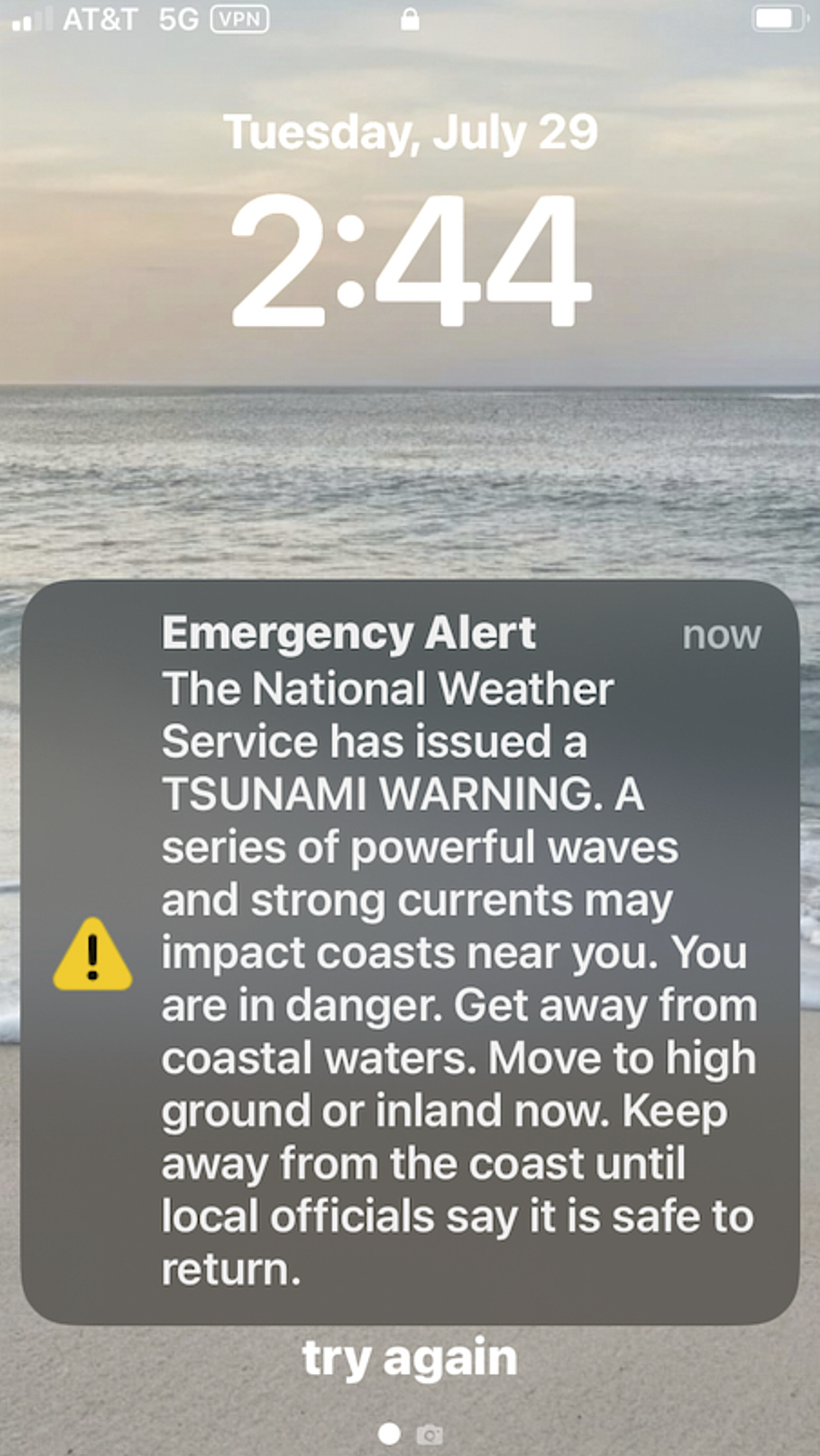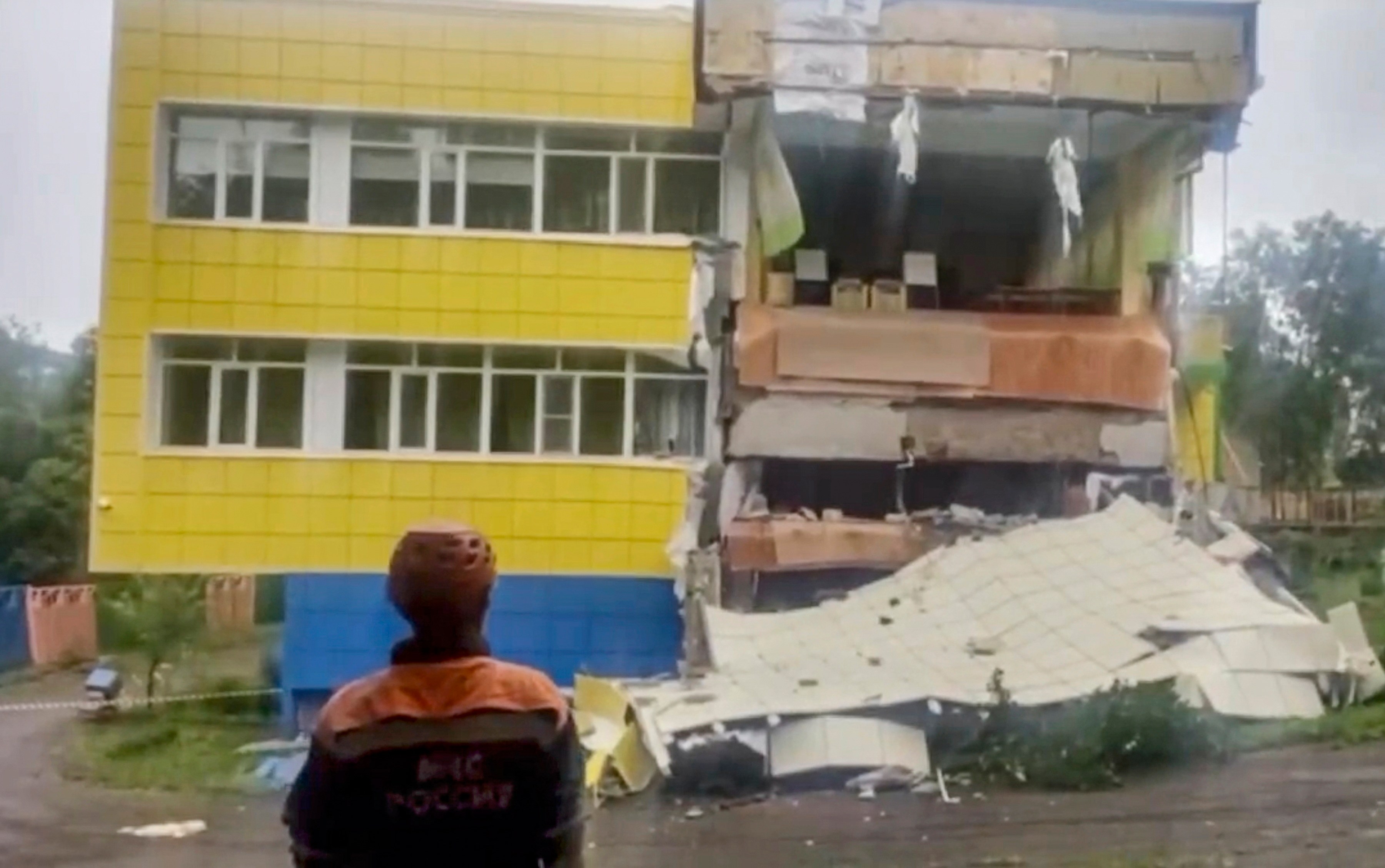As one of this century’s most powerful earthquakes struck off Russia’s far east, tsunami warning systems began reverberating across the globe — from the Kamchatka Peninsula to northern Japan, low-lying Pacific islands and the Americas.
From Hokkaido to Honolulu, panicked residents and tourists searched for higher ground, clogging up roads, fearing the worst.
Dramatic video circulated of waves striking the Kamchatka Peninsula and the port of Severo-Kurilsk, on Russia’s Kuril Islands.
“Today’s earthquake was serious and the strongest in decades,” the governor of Kamchatka, Vladimir Solodov, said of the 8.8-magnitude quake on Wednesday morning local time.
Concerns began to dissipate, however, when no reports of serious damage or injury were issued.
The Japanese authorities initially warned that tsunamis as high as 3m could strike coastal areas, but the highest recorded surge was 1.3m. The only reported fatality was a 58-year old woman in the city of Kumano who died when her car fell off a cliff as she tried to evacuate.
Some 1.9 million people live in the Japanese areas put under evacuation warnings and it appeared most of them had, in temperatures recorded at 41C in places, left their coastal homes for higher ground.
Tim Prouten has been on holiday with his wife and two children on the island of Okinawa. “We were in the car this morning to head to the beach and all our phones started buzzing,” he told The Times. “Our first concern was that we don’t scare the kids and make sure they stay calm.”
This was difficult, he said, when warnings across shop television screens read: “TSUNAMI! EVACUATE!” It was only when more information emerged and the authorities downgraded warning levels did Prouten and his wife begin to relax.
Laura Mansfield, 44, and her husband, David, were on a Hawaiian beach when their phones first buzzed with a tsunami warning message. The pair from Wokingham, Berkshire, were on holiday in Waikiki and originally took little notice of the alerts because the locals told them: “Warnings are quite normal around here.”
An hour later, at about 4pm local time in Hawaii, sirens began to go off and another warning message came through. Instead of “advisory”, it was now marked “extreme”.

Laura Mansfield received an alert like the below message sent to residents of Honolulu

ENNIFER SINCO KELLEHER/AP
Mrs Mansfield said: “We only really started to worry when alarms were sounding … It all escalated very quickly.” The couple left for their hotel, where they were able to wait out the tsunami on the 18th floor.
There were tsunami warnings in territories as distant from one another as Hawaii, Alaska, China, Mexico and New Zealand. Twelve hours after the earthquake, many had been lifted.
Despite initial fears remote islands in the Pacific would be hit by waves of up to 4m, forecasters expected heights of little over 2m by the time the tsunami began to reach the region’s Marquesas Islands.
By evening in Japan, many people were able to return to their homes, except in the north of the main island of Honshu island, and the island of Hokkaido. The Pacific Warning Tsunami Centre in Hawaii similarly downgraded its warning, saying that “based on all available data a major tsunami is not expected to strike the state”.
Some ferries and train services in northern Japan were suspended and the airport for the city of Sendai, which is near the coast, closed for several hours. It was off Sendai in 2011 that a 9.1-magnitude earthquake set off a tsunami with waves as high as 40m, which killed more than 18,000 people and caused a meltdown at the Fukushima nuclear power station.
On Wednesday some 4,000 workers at Fukushima took shelter on high ground, the plant’s operator said.
In the early hours of the morning in the US, there were reports that waves in Crescent City, California, were reaching heights of 1.1m. High waves also hit San Francisco, Monterey and Port San Luis, where the Los Angeles weather service said there was a “rapid and damaging surge, going from low to high tide in just a few minutes”.
Most tsunami warnings in the US were, however, soon downgraded from an alert to an advisory.
The US Geological Survey said the earthquake was shallow, at a depth of 12 miles, and was centred 74 miles from Petropavlovsk-Kamchatsky, a Russian city of 165,000 people. It revised the magnitude up from an initial estimate of 8.0, and reported a strong aftershock of magnitude 6.9.

Damage in Petropavlovsk-Kamchatsky
EPA
Kamchatka is a sparsely populated region of forests, cliffs and bears but the earthquake was felt strongly in its towns. A 25-year-old man named Yaroslav told Reuters the shaking in Petropavlovsk-Kamchatsky continued for several minutes.
“Considering its strength and how long it lasted I decided to leave the building,” he said. “The building is very flimsy and light, which might be why it survived. But it felt like the walls could collapse any moment. The shaking lasted continuously for at least three minutes.”

In Russia, the authorities on the Kamchatka Peninsula and the Kuril Islands had by the end of the day cancelled a tsunami warning. Dmitry Peskov, spokesman for the Kremlin, claimed Kamchatka’s preparedness for earthquakes had “proven itself”, adding: “Thank God, there were no casualties.”
The regional health minister, Oleg Melnikov, reported injuries. “Some were hurt while running outside, and one patient jumped out of a window,” he told Russia’s Tass news agency. “A woman was also injured inside the new airport terminal.”
Parts of Severo-Kurilsk were evacuated, and there was damage to a nursery.
By about midnight local time, the Klyuchevskoy volcano, one of the highest in the world, began erupting on the Kamchatka Peninsula. The Russian Academy of Sciences’ United Geophysical Service said a “descent of burning hot lava is observed” on its western slope.
According to the Russian Academy of Sciences, it was the strongest quake to hit the region since 1952.
Scientists have said the tsunami has its origins in what is known as a megathrust fault. “These are the largest faults on Earth and are capable of generating the largest earthquakes on Earth,” Dr Rebecca Bell, associate professor in tectonics at Imperial College London, said.
Japan’s coastal areas, by contrast with Siberia’s, are densely populated and memories of the 2011 disaster are still raw. As soon as the earthquake was detected at breakfast time, all Japan’s big TV channels immediately broadcast warnings, pleading with coastal residents to evacuate to higher ground, and not to return home for personal possessions or pets.
News organisations sent up helicopters and broadcast video from live cameras on coastal areas, and dispatched reporters to interview evacuated residents in hillside parks. But by lunchtime in Japan the incoming waves were small enough that they could only be detected by measuring instruments.


AloJapan.com